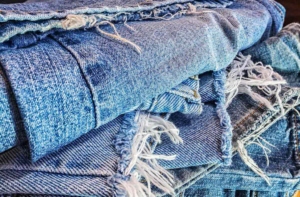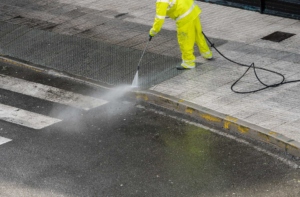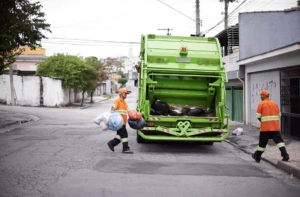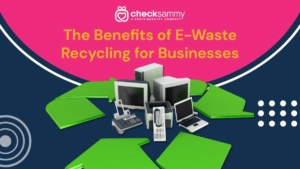A 5-Step Process for Sustainable Store Liquidations and Commercial Cleanouts
The pandemic radically changed the state of retail, accelerating the shift away from physical stores to e-commerce by five years in just a matter of months (TechCrunch).
Changing consumer behaviors and the financial hardships caused by stay-at-home mandates resulted in the permanent closure of more than 25,000 stores in 2020. While many were smaller shops, even giant retailers like Bed Bath & Beyond, Gap, Starbucks, JCPenney, and Macy’s shuttered dozens of locations.
Many retailers are still in a transitional phase, making critical decisions to liquidate physical locations in favor of e-commerce or move to smaller spaces—or facing eviction and financial hardship and closing for good.
No matter where you are in the process of liquidating or dissolving your retail business, you likely have a lot of unneeded merchandise on hand. Tossing it in the garbage isn’t good for your brand or the environment.
So, what should you do? How can you sustainably discard your excess merchandise as you close up shop?
Liquidating Sustainably with Upcycling, Asset Destruction, Debranding, and more
There are many options for getting rid of merchandise sustainably. You can:
- Recycle It: Partner with a sustainability company to help recycle your unwanted items. You’ll get rid of unwanted items without sending them to rot away in landfills.
- Upcycle It: People tend to use the terms recycling and upcycling But these two processes are very different. With recycling, items are broken down into their original materials at the molecular level and used again. Upcycling takes items as they are and extends their lives as something else.
For example, shampoo bottles can be upcycled into lighting fixtures or cheese graters. We’ve even had customers upcycle their damaged hand soaps into COVID handwashing stations.
- Donate It: Another option is donating unneeded merchandise to communities in need. Some brands are hesitant about this option because of the potential optics of donating on a large scale. But, thanks to services like debranding, you can easily donate your goods while keeping your brand’s reputation intact.
- Sustainable Asset Destruction: If the other three options aren’t viable, you can always partner with a company that practices sustainable asset destruction to get rid of your unwanted assets while keeping your merchandise out of the landfill.
But you obviously can’t go from a closeout sale straight to asset destruction without some steps in between. So, what is the actual process of a sustainable store liquidation?
The 5-Step Process for a Sustainable Store Liquidation
The process for a store liquidation varies, but when you work with a sustainability partner like CheckSammy, it looks a little something like this:
- Clean out all items from the store: First, you’ll work with your sustainability and junk removal partner to clear everything out of your store.
- Itemize everything: If your sustainability partner doesn’t do it for you, you’ll need to itemize everything you’re throwing out as you clear your store.
- Divert and upcycle as much as possible: With assistance from your sustainability partner, you’ll determine which items can be upcycled, recycled, or donated, and which items will require debranding, if any.
- For leftover merchandise, destroy assets in a sustainable way: After you’ve diverted as much of your inventory as possible, you’ll work with your sustainability partner on sustainable asset destruction.
- Gather data to inform your supply chain management: As you and your sustainability partner sort and clear items, it’s helpful to compile as much data as possible on where your merchandise ends up. This is important for ESG reporting, but it can also be crucial for supply chain management. Your supply managers need to know how much inventory you have in stores and what’s happening on the back end to make changes to the front end. If you don’t know what you’re throwing away, you don’t know what you need moving forward.
Get Started With Upcycling, Debranding, and Asset Destruction Today
Here’s the reality: There isn’t a one-size-fits-all recycling program – especially when you’re dealing with store closeouts and liquidation. But working with an established partner can help alleviate the stress of disposing of leftover merchandise by providing sustainable, comprehensive options.
At CheckSammy, we’re happy to create a plan to help divert and destroy your excess inventory that follows your asset protection guidelines. We also provide verifiable and unalterable data and itemization, so you know exactly what we did with your merchandise. Whether you’re looking for upcycling, debranding, asset destruction or more, we can help. Contact us now to get started.
See Our Services
Create a custom solution to meet your waste and sustainability goals. Contact us today!
Continue reading
Dive deeper into the CheckSammy Blog by reading one of our posts below
Feeling the Pain of Higher Resident Turnover? Apartment Junk Removal Can Help
If you’re a property manager, you’ve probably had a significant increase in tenant turnover over the last couple of years. So it’s no wonder apartment junk removal may be top of mind for you right now. There are several reasons for this shift. For one, the housing market is on fire right now. In 2020 […]
Read MoreSetting Up a Community E-waste Recycling Program
E-waste is the fastest-growing municipal waste stream according to the EPA, yet e-waste recycling isn’t keeping pace. In fact, only 12.5% of all e-waste is recycled, reports the EPA. Starting a community e-waste recycling program is a terrific way to ensure hazardous e-waste, like lithium-ion batteries, doesn’t end up in your community’s landfill. Creating an […]
Read MoreWaste Management’s Role in the Circular Economy
Establishing a waste management program for your business or community is one of the best ways you can contribute to the circular economy. Here’s everything you need to know about waste management’s role in the circular economy (and how to get involved). What Is the Circular Economy? Our current economic model is all about taking […]
Read More5 Reasons to Consider a Textile Recycling Program for Your Organization
Americans sent more than 17 million tons of textiles to landfills in 2018, a volume that is only increasing every year, reports the Environmental Protection Agency. When you think about the fact that it can take over 200 years for textiles to decompose, it’s easy to grasp how large textile waste’s contribution is to the […]
Read More8 Benefits of Environmentally Friendly Power Washing Services
If you’re into maintaining the curb appeal of your business or home, then you’ve probably heard of pressure washing. Pressure cleaning involves using high-pressure water spray to remove grime, mold, dust, paint, mud, and other junk from objects or surfaces. Many people worry that pressure washing isn’t good for the environment, but this couldn’t be […]
Read MoreWhy Our Customers Love Our Full-Service Junk Removal
If you’re looking for full-service junk removal services, you’ve come to the right place. CheckSammy is a one-stop shop for all your junk removal and sustainability needs. From our affordability, simplicity, and unrivaled turnaround times to our innovative sustainability solutions and patented technology and data, it’s clear why some of North America’s biggest companies choose […]
Read MoreTips for a Stress-Free Move From An Eco-Friendly Junk Removal Company
What does an eco-friendly junk removal company know about moving? Quite a lot, actually. Moving can be an especially chaotic time. You have to pack everything up, get rid of unwanted items, clean your property, load everything up, and move your things to your new location. That doesn’t even include the unpacking and resettling period. […]
Read MoreCollege Junk Removal Tips for Student Move-In Day
As the new school year gears up, colleges across the country are looking for ways to clean up their campuses before the new year begins, and many of them want to do so sustainably. College junk removal isn’t easy, though, especially around move-in week—and when trying to do so sustainably. As students move in and […]
Read More8 Items Hospitality Businesses May Not Know They Can Recycle
One hotel guest produces 2.5 pounds of trash every single day. Just a single hotel room produces around one cubic yard of waste each month, which totals 200 gallons of waste per room every month. Most of this waste goes straight to the landfill, even though research shows that up to 60% of it is […]
Read More











